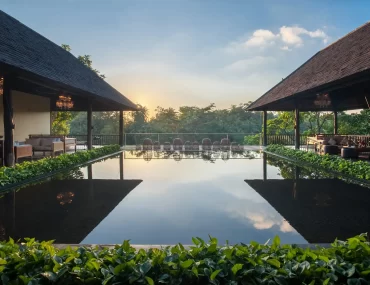

Burmese food have influences from all around Southeast Asia, India and China but it also has some unique ingredients. Myanmar food often doesn’t get the same well-received reputation that other countries cuisines in the region receive but it is still definitely worth to try.
The national dish of Myanmar is a fish broth packed with rice noodles, eggs, fritter and the occasional fish head. Mohinga maybe doesn’t sound or even look that delicious, but the mixture of right ingredients will give you a taste explosion. Each region has their own way to prepare Mohinga, but most dishes include hard-boiled egg, dried chilli and an abundance of vegetables.
Burmese curry is much oilier than its Indian equivalent but it’s usually relatively rich sauce. You can choose between chicken, pork, beef, shrimps or mutton but actually the best part of Myanmar Curry is the selection of side dishes that come with it.
Like most Myanmar dishes tea leaf salad is a concoction of different flavours that give it a unique taste. Its main ingredients are fermented tea leafs, tomatoes, cabbage, peanuts and peas. Many people think that tea shouldn’t be edible, but after having this salad they will realise they were wrong.
Shan rice is usually cooked with flakes or fish and oil, other additions are vegetables, garlic and minced chicken or pork.
Coconut cooked noodles with chicken and some additions like lime, chilli and fish sauce.
Thick round noodle that is usually served with slices of chicken. Additions include egg, chilli and lemons.
Not only in Shan State this dish is popular all around the country. Shan noodle soup includes vegetables, chilli and marinated chicken or pork.
Grilled fish is available at many barbecue stalls in Yangon’s Chinatown. Fish can be marinated many different ways often spicy, the lemon flavour is the most prominant.
These little stalls around the country are very popular among the locals but might not be the best option for the faint-stomached. Various types of innards of animals, usually pigs, are boiled in a hot pot and then eaten on a stick.
You will find tea shops everywhere in Myanmar with small plastic chairs and tea cups on the table. Besides some lunch dishes you can try sweet snacks, they are particularly enjoyable when dunked into your tea.
Whet your appetite for more?
Morning – Mandalay Tea Shop Foodies Tour explore the hidden food gems in the streets of Mandalay
Half day – Moonsoon Cooking Class in Yangon learn to prepare Burmese food
Afternoon Tea at the Strand Hotel – Classic landmark hotel in Yangon. Make sure to stop here for a tea or a signature cocktail, the Strand sour.
Afternoon Tea at the Acacia Tea Room – charming tea room catering to discerning customers
Le Planteur – still the best restaurant in Myanmar. Classy french fusion cuisine in a villa by Inya Lake.
Shwe Sabwe – social enterprice and training school in culinary arts and catering.
[fusion_text] BAGAN TEMPLE MARATHON Hundreds of marathon enthusiasts around the world will travel again to Myanmar and Bagan for the Bagan Temple Marathon held…
1. Shwedagon Pagoda, Yangon Shwedagon Pagoda is one of most revered Buddhist pilgrimage sites in Myanmar. The 100m tall stupa situated on Singuttara Hill…
Few foreign visitors make it down to Tanintharyi Region, but those who do will find stunning beaches, untouched islands and long-forgotten colonial outposts. By…
New luxury resort Loikaw Lodge has opened for business beginning of October 2016 and is to set new standards in Loikaw, Kayah State in…
Myanmar National Airlines has announced starting flights from Yangon to Chiang Mai 4 November 2016. The flight schedule is on Mondays and Fridays with ATR…
Myanmar’s gourmet king Ko Ye also know as Sharky opens new restaurant in Bagan opposite to Swezigon restaurant. Expanded from small gourmet foods boutiques…
FMI Air has announced to start daily flights from Yangon to Mawlamyine on 1 October. This will be exciting new routing that will cut…
Myanmar (Burma) It’s becoming a top travel destination in Southeast Asia. And because of its growing popularity, it’s now able to cater to those who…